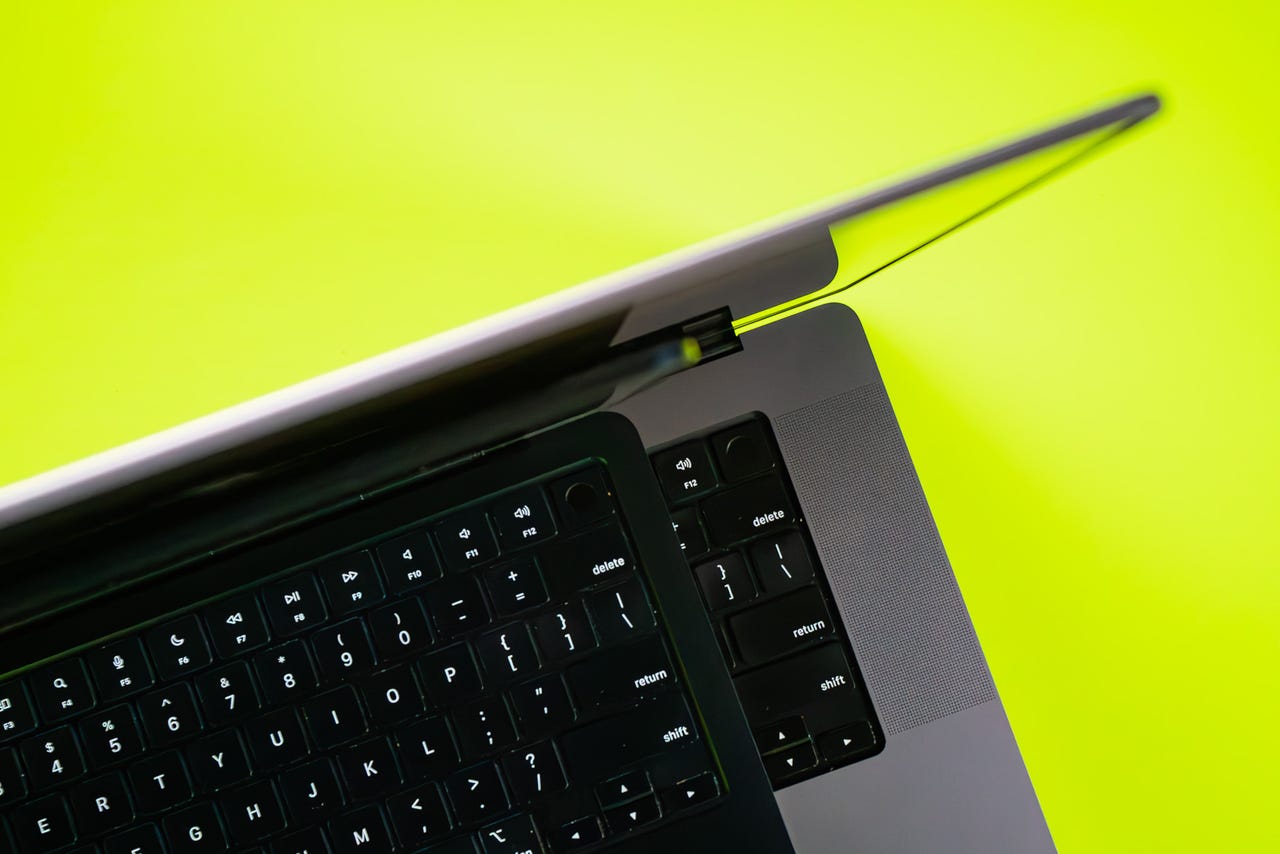'ZDNET Recommends': What exactly does it mean?
ZDNET's recommendations are based on many hours of testing, research, and comparison shopping. We gather data from the best available sources, including vendor and retailer listings as well as other relevant and independent reviews sites. And we pore over customer reviews to find out what matters to real people who already own and use the products and services we’re assessing.
When you click through from our site to a retailer and buy a product or service, we may earn affiliate commissions. This helps support our work, but does not affect what we cover or how, and it does not affect the price you pay. Neither ZDNET nor the author are compensated for these independent reviews. Indeed, we follow strict guidelines that ensure our editorial content is never influenced by advertisers.
ZDNET's editorial team writes on behalf of you, our reader. Our goal is to deliver the most accurate information and the most knowledgeable advice possible in order to help you make smarter buying decisions on tech gear and a wide array of products and services. Our editors thoroughly review and fact-check every article to ensure that our content meets the highest standards. If we have made an error or published misleading information, we will correct or clarify the article. If you see inaccuracies in our content, please report the mistake via this form.
MacBook Pro vs. MacBook Air: How to decide which Apple laptop to buy

If you're in the market for a new MacBook, you might wonder if it makes more sense to buy a MacBook Pro or a MacBook Air. Apple's been busy refreshing its MacBook lineup: the company has added more than five new MacBook configurations and retired more than three over the past 18 months.
When buying a MacBook, you'll want to consider the computer's display size, storage capacity, computing power, and price. For example, the 2022 13-inch and 2024 13-inch MacBook Air are both Air models, but have different chips, so the laptops vary in performance, efficiency, and battery life.
The most recent MacBook Pro and MacBook Air models include Apple's M3 chips, which are even more efficient and capable than the M2 chips. In this situation, think of yourself as Goldilocks; you're confronted with five different MacBook models, but you need to find the one that's just right for you. So, before you decide which one to buy, let's cover the main differences between the Pro and the Air.
Also: M3 MacBook Air review: Apple's AI computer for the masses has arrived
What's the difference between the MacBook Pro and Air?
Believe it or not, there are a multitude of differences between the MacBook Pro and the MacBook Air. The biggest differences between the two are pricing and computing power. The most affordable MacBook Pro with an M3 chip will cost more than the most affordable Air with an M3 chip. However, the Pro is more powerful, thanks to the upgraded internals under the hood.
Review: MacBook Pro (M3 Max): A desktop-class laptop for an AI-powered age
The M3 MacBook Pro models have more unified memory, longer battery life, more ports (including HDMI and SD card), and, generally, a more sophisticated GPU and CPU than their Air counterparts. There are two MacBook Pro display sizes: 14-inch and 16-inch.
The M3 MacBook Pro has improved internal computing parts for greater efficiency and performance. There are three chips in the M3 family: M3, M3 Pro, and M3 Max. The M3 models have improved media engines to handle video playback. The M3 chips have the same amount of CPU and GPU cores and neural engines as the M2 chips, and both the base M2 and M3 chips can support the same amount of unified memory.
According to Apple, the M3 chips are 15% faster than the M2 chips, so if you recently upgraded to an M2 MacBook Pro, you're not eons behind on computer power.
Here's the 16-inch MacBook Pro.
If you're looking for a new 13-inch MacBook Pro, Apple unfortunately discontinued the 13-inch MacBook Pro after releasing the new 14-inch MacBook Pro. You can no longer purchase a 13-inch MacBook Pro on Apple's website. Apple also discontinued the 14-inch and 16-inch MacBook Pro models with M2 Pro and M2 Max chips.
Also: M3 MacBook Pro with top-of-the-line specs? You'll be surprised at how far it is under $10,000
You can equip the current 14-inch and 16-inch Pro with Apple's new M3 Pro and M3 Max chips, and you can purchase a 14-inch Pro with the base M3 chip. If you're going big with the 16-inch Pro, understand that your only options are the M3 Max or M3 Pro chips, which will bump up the price tag.
The upgraded chipsets are more powerful than the base M2 chips found in the 2022 13-inch MacBook Air. These upgraded chips make the 14-inch and 16-inch Pro suitable for editing pro-grade video footage (up to 8K), rendering 3D art, producing music, and editing high-resolution photos in Adobe Photoshop.
However, the more power you want with the 14-inch and 16-inch MacBook Pro, the more expensive the laptop becomes. The 14-inch Pro starts at $1,599 and, with chip and internal storage upgrades, can go up to $3,199. The 16-inch Pro starts at $2,499 and, with internal upgrades, goes up to $3,999.
If you've decided you want a MacBook Pro and need more guidance determining which Pro model works best for you, check out ZDNET's M3 MacBook Pro buying guide.
The 15-inch MacBook Air is the largest of its kind, but lacks the side-firing speakers found on the Pro models.
The 2022 13-inch MacBook Air only comes equipped with Apple's base M2 chip, and the 2024 13-inch and 15-inch MacBook Air only come with the base M3 chip. However, the lack of Pro and Max chips doesn't mean the Air is a less-than-capable computer. The MacBook Air is thinner and lighter than the Pro because it has less internal hardware, dismissing for-work ports like HDMI and an SD card slot, and a cooling fan. Instead, Apple is banking on the efficiency of its chips to keep the laptops' heat dissipated and stabilized.
Also: M3 MacBook Air vs. M2 MacBook Air: Which Apple laptop should you buy?
And, of course, less hardware means the MacBook Air is less expensive, but you can add a few upgrades. For the 13-inch Air, you can choose between two M2 chip configurations, as one M2 chip has two more GPU cores than the other. An upgraded GPU means your computer can process graphics more efficiently, making 4K video editing faster and smoother.
Last summer, Apple announced a 15-inch MacBook Air with an M2 chip, but discontinued the device with the introduction of the M3 15-inch Air. Although the 15-inch M2 Air had a short run, it's still a great option for those looking for an Air with up-to-date capabilities. However, you can't purchase it brand new from Apple. You can buy it refurbished from Apple or you can buy it new for a discounted price at Best Buy.
The M3 13-inch Air starts at $1,099, and goes up to $1,499 if you max out the internal storage and pick a more powerful GPU. The M3 15-inch Air starts at $1,299 and goes up to $1,699 in exchange for more internal storage and unified memory.
If you're confident you want an M2 MacBook Air and need more help deciding which Air will float your boat, check out ZDNET's M2 MacBook Air buying guide. If you're contemplating buying an M3 MacBook Air and want to know how it stacks up against the M2 Air models, we compared the specs to help you decide which one is best for you.
Which MacBook is right for you?
The answer mainly depends on how you see yourself using the laptops and how display size and weight factor into that equation. A reliable computer is an investment; you don't want to spend too much on an overqualified laptop, and you don't want to buy a computer that's not powerful enough for your needs.
If you're a graphic designer, music producer, professional photographer, videographer, 3D artist, or iOS game and app developer, a MacBook Pro would be the way to go, as far as MacBooks are concerned. The Pro models can handle intense graphics processing and more software running in the background without significantly lagging, overheating, or slowing down.
If you are a student or someone who spends most of your time in Microsoft Office or Google Workspace, a MacBook Air may be a better fit. If you want a MacBook to casually surf the internet, watch YouTube or Netflix, respond to emails, and FaceTime your friends, then the Air model is adept at handling those tasks and won't put a burden on your back as you lug it around.
No matter which model you buy, a MacBook is excellent for users who want to expand their personal Apple ecosystem with a device that works seamlessly with their iPhone, AirPods, Apple Watch, and other products. Handoff, for example, allows you to switch FaceTime calls between your MacBook and iPhone, and your MacBook can easily access your iPhone files, messages, contacts, and photos.
